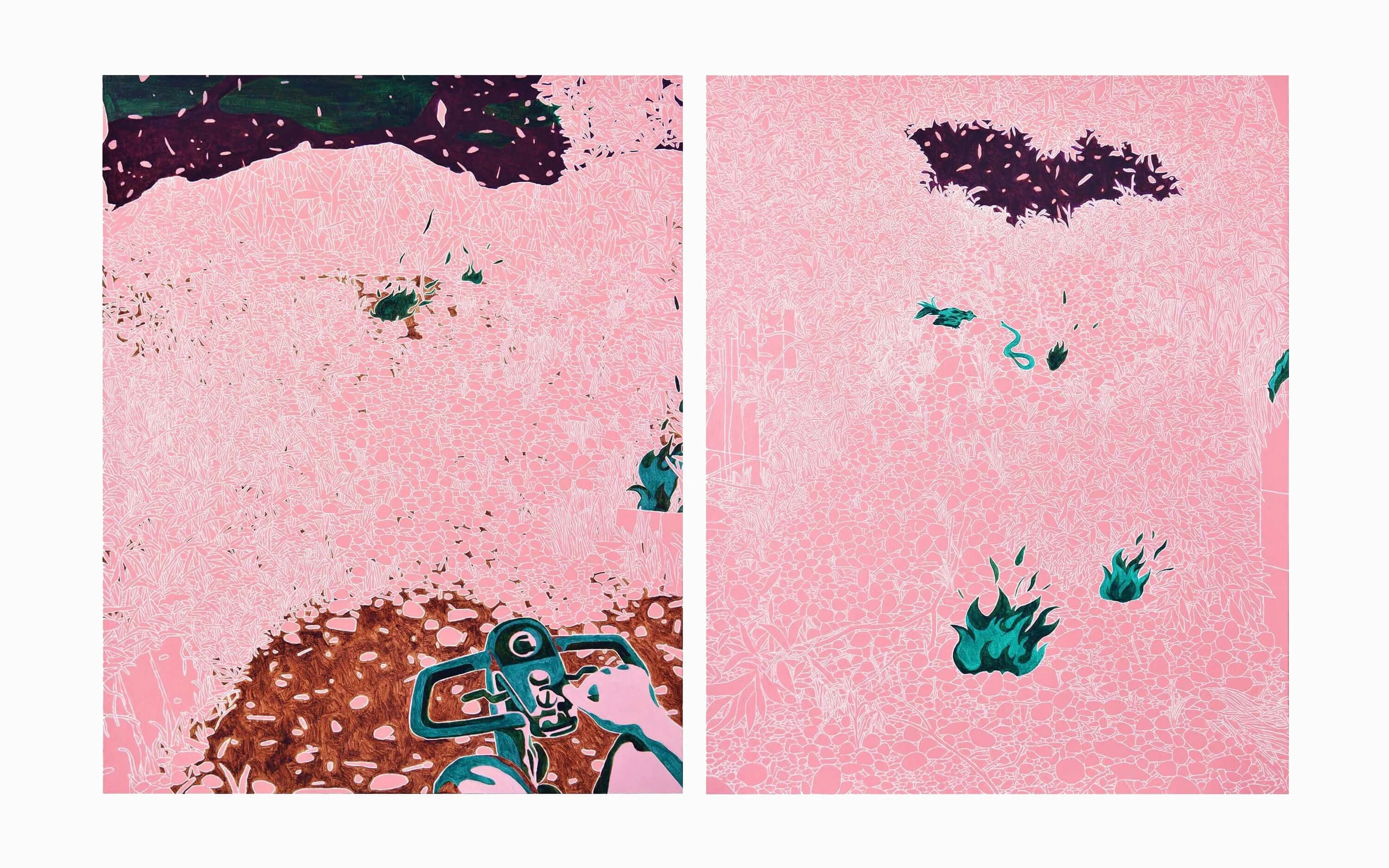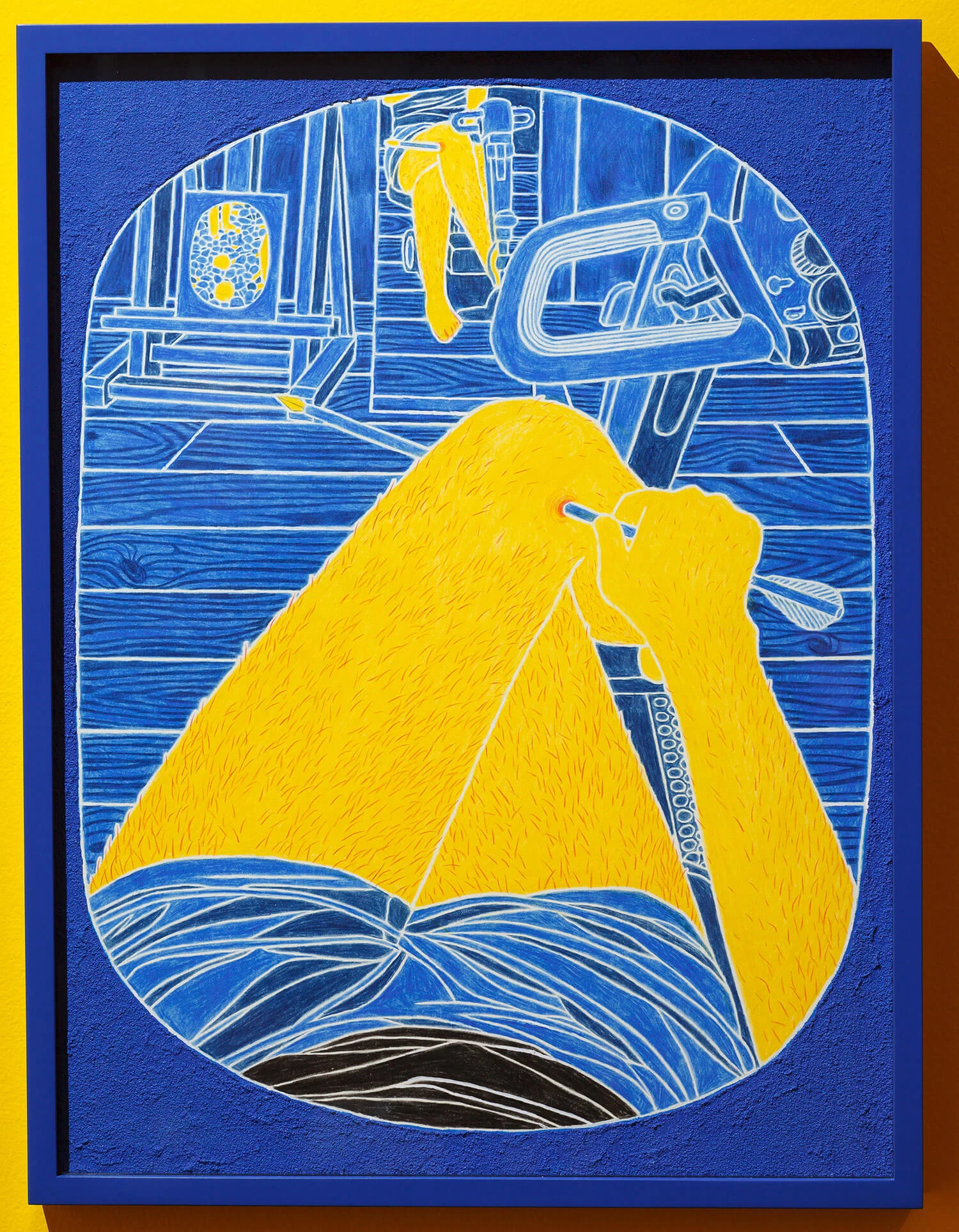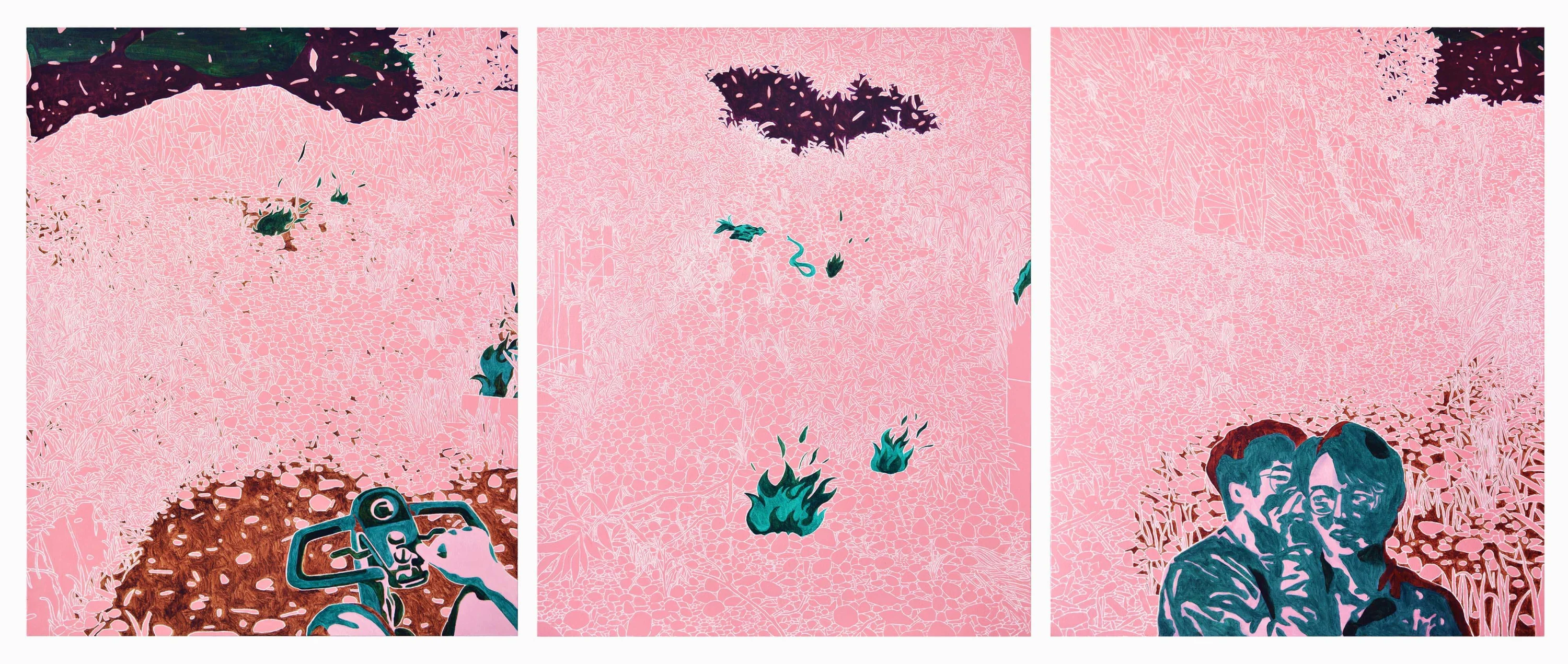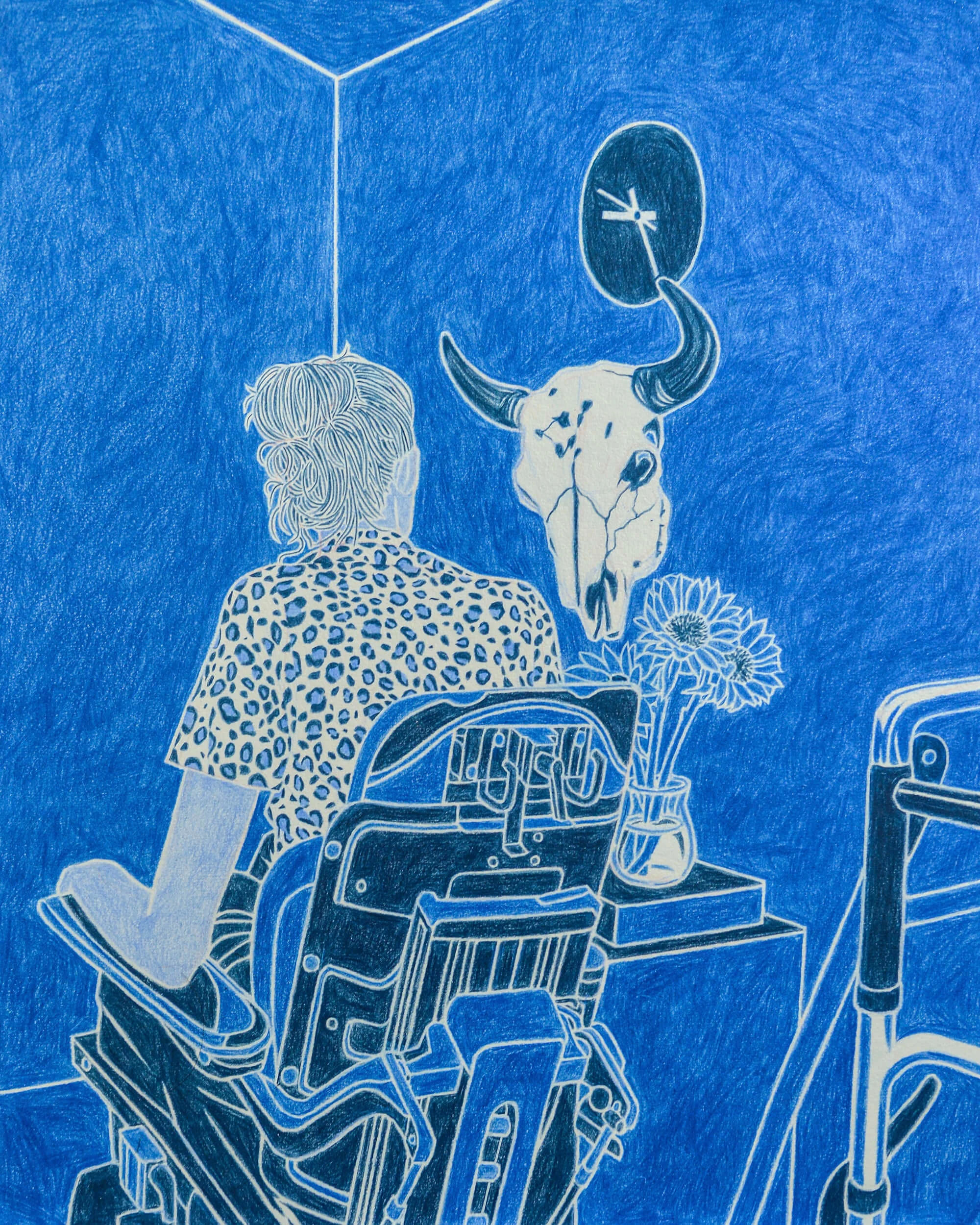

Taiwanese artist Timothy Bair’s paintings show the world through his eyes. In his work, he explores breakups, questions perceptions and unpacks belief systems. Tim has Spinal Muscular Atrophy, and so his work naturally touches on life with a disability, but he makes sure it isn’t entirely defined by it. He tells Alix-Rose Cowie the paintings are simply intended to show his reality, to show the world he sees, as it is.
Growing up in Taiwan, Timothy Bair wasn’t much interested in becoming an artist. Fine art was synonymous with elegance and beauty, and the art he’d been exposed to was far too pretty. Everything changed at age 16 on a trip to Paris, where he saw work by Francis Bacon for the first time and realized art needn’t be precise nor pleasant. It could be raw, messy and even macabre. “That really, really moved me,” he remembers. “I found it so fascinating that he took trauma and channeled that into his work. That’s not something they teach you in Taiwan; you paint animals and flowers – beautiful things.”

Tim has SMA (Spinal Muscular Atrophy), a condition that progressively affects mobility. Growing up, he could walk and stand but gradually lost this ability over time. “There's still a lot of discrimination against disabled folks in Taiwan,” he says, and so in 2015, he moved to the US for the improved infrastructure and accessibility, but also to study a BFA at the School of Visual Arts in New York City where he now lives and works.
With a hand, a leg or the handlebars of his mobility scooter at the edge of the frame, Tim invites a viewer in to see what he’s seeing. Work made from his own experiences naturally includes living with a disability. “I must accept the fact that this is my life, and everything I see and perceive is going to be through the lens of disability, but I've always tried to make it very clear – to varying degrees of effectiveness – that it’s not about disability,” he says. Through this lens he addresses subjects like the deterioration of a romantic relationship, the meaning of masculinity, or larger cultural belief systems that affect him personally. While his work is autobiographical, he hopes to strike upon something universal.

“‘Various Small Fires” is a large triptych that was painted over a few months while Tim was going through a difficult break up. It’s purposefully set in a mountain range near his hometown of Taichung where there are landslides after heavy rain. In one panel, his ex-girlfriend's brother is whispering into her ear, an act to represent the rumors that arose from hiding his disability from her ultra-conservative family. In another panel a rooster and a snake (the Chinese zodiac signs of his grandparents) are fighting to symbolize the arguments that his family had over his genetic condition when he was younger. He depicts these hurtful personal experiences to understand and tackle the larger cultural context that they arise from. “It’s not about my family, it’s about Taiwan,” he says. “This culture does not accept blemishes; it’s all about family honor, family pride. I want to look at these things and explore them.”
“Various Small Fires” undoubtedly deals with painful subject matter, but Tim has found some relief through a dark sense of humor and a valuable light-heartedness that’s behind other works. He’s also learnt to poke fun at people’s harmful attitudes. “I Stand No Chance of Growing Up” is a critique of the conservative idea that many Asian parents impart on their children to marry “your own type” for a more harmonious marriage. His tongue-in-cheek response is an image of himself longing after a woman in a wheelchair. “It's not strictly about disability, it's just through that perspective,” he says. “I think anyone can understand that.”


Tim doesn’t believe people need to identify with his life experience in order to interpret his work. He’s become so disillusioned with “identity art” that he didn’t attend the opening of his solo show last year. “If I'm there, it's too difficult for people to separate the identity from the work,” he explains, “And I felt like without me being present, it would become a lot easier for people to understand the work from where they're coming from.”
Tim doesn’t need people to feel the same things he feels, but he hopes his work will make them feel something. “They don't have to think, ‘I'm not disabled, so I can't understand this work.’ I hate that,” he says. “Losing your ability to walk could be like losing your grandmother who was a support system. Losing something is so universal. I'm not a gay British man making work in the 50s, and Bacon spoke so much to me. Even though he probably never realized that a disabled Asian kid was going to see his work at all.”

After seeing Bacon’s work in Paris as a teenager, Tim returned to Taiwan and hit the library to learn more. But in all the art history books he devoured he never found a painting of a person with a disability. Even with his opinions on “identity art,” he’s always wanted to paint disabled people; he’s just bored by representation for representation’s sake.
In his most recent work, an as yet untitled triptych of his friend, he’s found a more interesting approach. There’s a philosophical debate within the disabled community that Tim has been following about whether disability is innate or only present in relation to an ableist environment. The three panels feature his friend, but the emphasis is on her environment; the left panel is the lobby of a gallery that has an accessible lift, the center panel is her in her living room, and in the right panel, she’s in an accessible shower room. “These are all spaces that aren't ever depicted. And I'm not depicting it just because I think, ‘Hey, this is special.’ I'm depicting it because it's my experience,” he says. “This is us. This is our life.”


